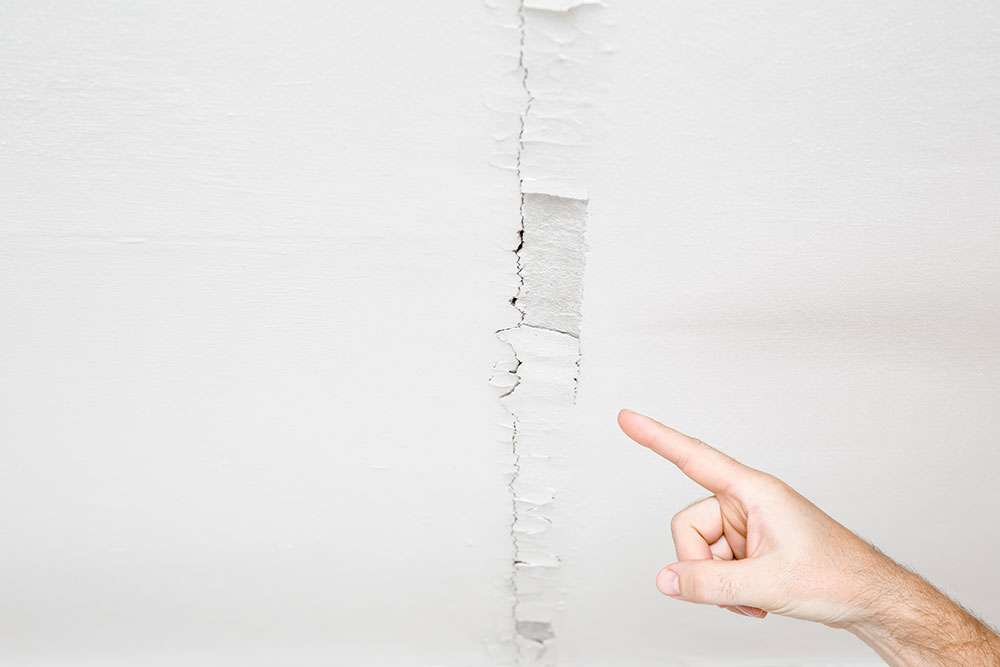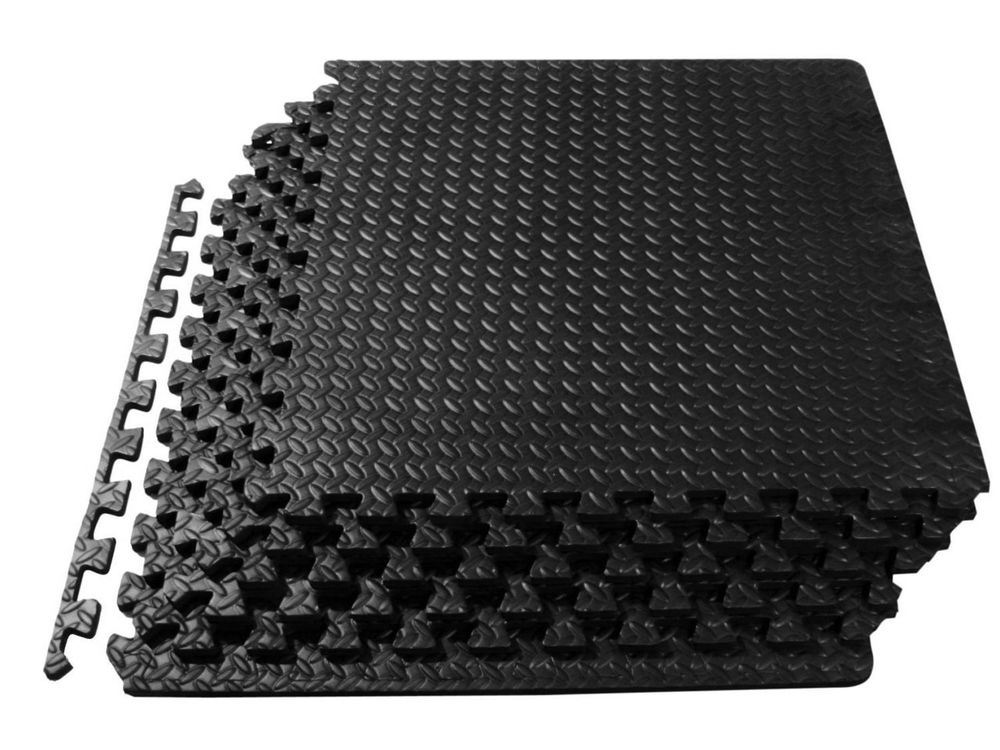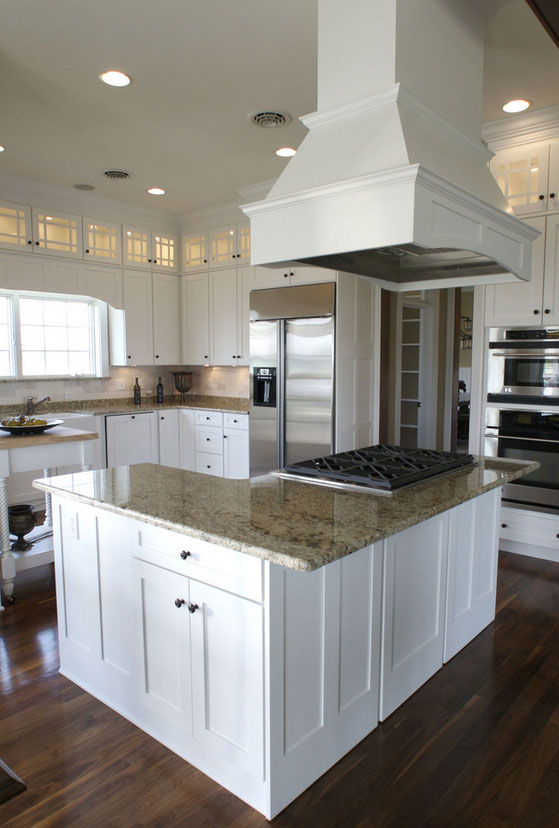What does cracks in the ceiling mean
Are Ceiling Cracks Serious? When To Worry?
Table of Contents
So, are ceiling cracks serious? Let’s answer that by starting off with some good news…
Ceiling cracks aren’t necessarily a sign of structural damage. Yes, they can be a sign of serious structural damage but they often aren’t. It all depends on the size, type, and location of the crack.
This short article will give you basic information on the types of ceiling cracks, what causes them, and when you should contact a foundation professional.
Are ceiling cracks serious?
As we just pointed out, they could be. Usually, ceiling cracks are caused by one of two things: structural damage or settling (all structures settle to some extent after they’re built). If the ceiling cracks are due to normal settling, there’s usually nothing to worry about. However, if they’re caused by structural damage, you’ll need to take action and you can’t do that unless you know what to look for.
What causes cracks in ceilings?
There are two main causes of ceiling cracks: Structural damage and the natural settling that happens as a building ages. Ceiling cracks can also be caused by poor workmanship.
- Your home is getting older. Do you look and feel like you did when you were ten? Well, your home doesn’t either. Normal wear and tear – which includes foundation settling – happens naturally as a building ages and can cause cracks not only in the ceiling, but wall cracks and floor cracks as well.
- You have moisture damage. Ceiling cracks can also happen because of moisture damage. The moisture might be coming from the roof or from the floor immediately above the ceiling. Did a recent powerful storm sweep through your area bringing considerable rainfall? Is there a possible plumbing leak above the cracked ceiling?
- The floor above the ceiling is too heavy. Is there something heavy in the attic or on the floor above the cracked ceiling? Bathrooms especially need ceiling support because they contain heavy items like bathtubs.

- Something is wrong with your drywall. Drywall that hasn’t been properly installed will often crack, and cracks in ceiling drywall usually aren’t serious. For example, this can happen when drywall joints aren’t properly taped. In this case, the installer doesn’t use enough drywall mud while taping the joints and as a result the tape doesn’t stick. As the tape comes loose, it causes the drywall to crack.
- You have foundation problems. Unfortunately, ceiling cracks can also be a sign of serious structural damage. For example, foundation settlement can cause ceiling cracks. This happens because foundation settlement puts stress on the building’s frame. If ceiling cracks are caused by structural damage, you need to catch them early.
Learn more about Wall Crack Caused By A Foundation Problem.
Types of ceiling cracks
All buildings – wood, concrete, steel, or something else – move.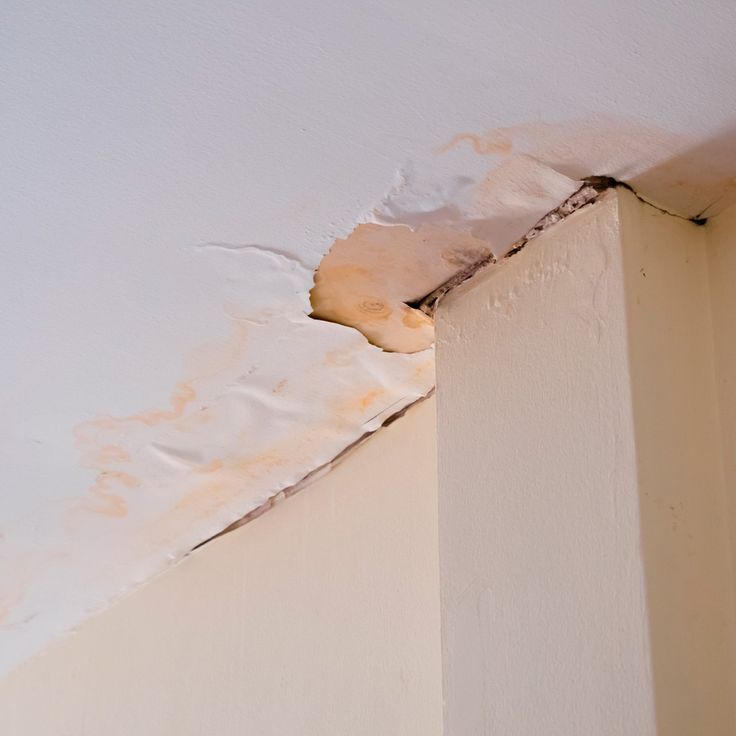 Even though they look stationary, they aren’t. This imperceptible movement is caused by various things including seasonal temperature changes which cause the soil underneath the building to shrink and expand, as well as the kind of natural settling that happens over time to all structures. Because of this movement, a certain number of cracks in ceilings and walls are to be expected, and usually nothing to worry about. However, some cracks indicate a serious structural problem. So, you need to know how to spot those.
Even though they look stationary, they aren’t. This imperceptible movement is caused by various things including seasonal temperature changes which cause the soil underneath the building to shrink and expand, as well as the kind of natural settling that happens over time to all structures. Because of this movement, a certain number of cracks in ceilings and walls are to be expected, and usually nothing to worry about. However, some cracks indicate a serious structural problem. So, you need to know how to spot those.
- Thin, spiderweb cracks in the ceiling plaster or paint are probably nothing to worry about. Small cracks in ceiling plaster are normal and as we’ve just pointed out, can happen when there’s even a slight amount of natural building movement. Sometimes they’re caused by cracks in ceiling paint after years of build up. You’ll also find them on walls and floors. They usually aren’t a problem.
- Cracks that run across the ceiling and down the wall.
 Any crack that runs all the way across a ceiling and then down a wall is almost certainly the result of structural damage. Contact a foundation professional right away.
Any crack that runs all the way across a ceiling and then down a wall is almost certainly the result of structural damage. Contact a foundation professional right away. - Ceiling cracks accompanied by sagging. Not a good sign. Cracks accompanied by sagging need to be looked at immediately.
- Crack between wall and ceiling. If you notice a gap between your wall and ceiling, this is almost always a result of foundation settlement and should be looked at by a professional.
Ceiling cracks: When to worry
So, is it just a cosmetic problem associated with the structure’s age or something more serious? As we’ve been pointing out, it really depends on the size of the crack, its location, and what caused it. Here’s when you should contact a professional…
- Ceiling cracks along with sagging indicate a possible structural problem that needs immediate attention.
- One, big, continuous ceiling crack that goes across the ceiling and down a wall is almost certainly a structural issue.
 Contact a foundation professional right away for an inspection.
Contact a foundation professional right away for an inspection. - A large number of small ceiling cracks could also indicate a serious structural problem. Contact a professional.
- If your common sense tells you there might be a serious issue. This article is meant to provide pointers, but by no means is meant to replace the value of a professional foundation inspection.
If you see any of these cracks, start looking for other signs of structural damage. This will help you determine if the cracks are serious. Signs of structural damage include…
- Uneven floors that slope or sag.
- Doors and windows that stick.
- Cracks in flooring that aren’t limited to one tile. Look for cracks that go all the way across the floor in a straight line.
- Cracked or bowed walls.
- Wall rotation. This is caused by excess moisture under the foundation. As the outside edge of the foundation sinks into the soggy soil, the inside edge lifts up and causes the wall to rotate.
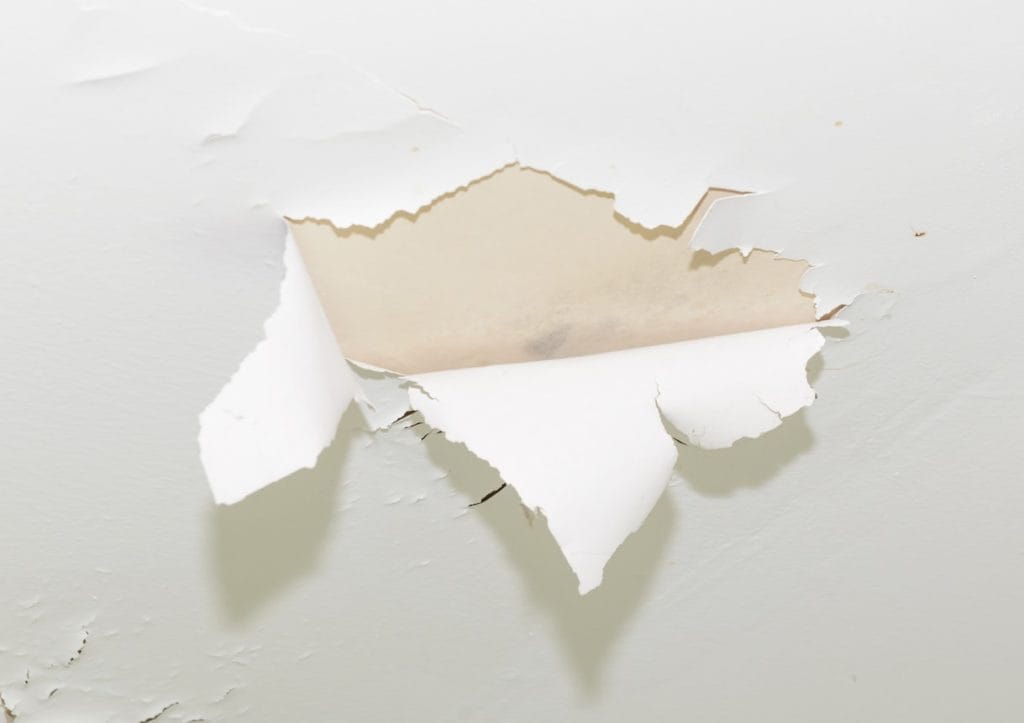
- Moldings that are cracked or out of place. This happens because things aren’t moving in sync.
- Stair step cracks in bricks or masonry.
- Walls that are no longer in contact with the ceiling or the floor.
- Porches or chimneys that have separated from the building.
- Water in your basement. This can be caused by cracks in the foundation wall.
Also think about whether there have been any recent earthquakes, landslides, problems with sinkholes, or anything else that could have caused structural damage.
How To Repair Ceiling CracksIf the ceiling cracks are merely cosmetic – i.e., paint and plaster build up – you can repair them by removing the old paint or plaster and then repainting or re-plastering. However, if the ceiling cracks continue to open and you notice they may be getting bigger, this could indicate differential settlement and the home may need underpinning.
Underpinning is about extending the foundation depth so that it rests on stable soil. At Bay Area Underpinning we install galvanized steel push piers. Our most common method of lifting and stabilizing foundations that are experiencing settlement. The procedure involves installing steel brackets to the foundation and then hydraulically driving the steel piers/pipe through the brackets and into the soil under reaching load bearing strata or bedrock. Once the piers have reach load bearing strata, a synchronized hydraulic lifting system raises the house as needed. Any cracks caused by settlement can typically close up and in some cases they will not close up. It all depends on the home, and how much lift will happen when the lifting process begins and finishes.
For more information, see Underpinning A House: What Every Homeowner Needs To Know.
Conclusion
All homes – even brand new homes – settle into the soil. When this happens you will see a few small cracks appear here and there, including on the ceiling.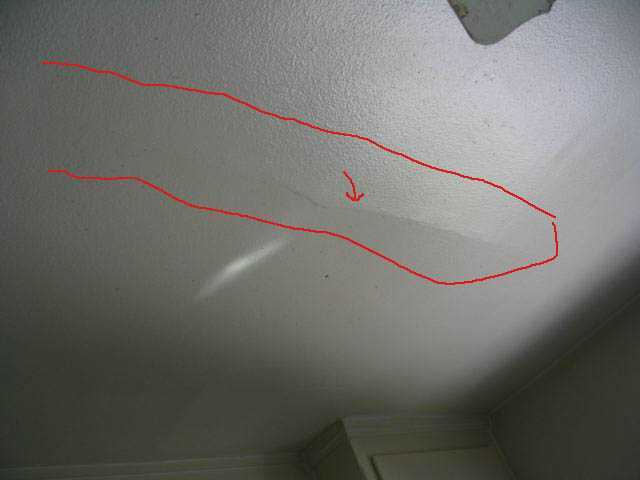 Most of the time, these small cracks do not indicate a major structural issue. However, it’s good to know what to be on the lookout for. That way, if any serious cracks do appear, you’ll be able to spot them and take immediate action.
Most of the time, these small cracks do not indicate a major structural issue. However, it’s good to know what to be on the lookout for. That way, if any serious cracks do appear, you’ll be able to spot them and take immediate action.
If you see any cracks you’re not sure about, contact a foundation professional. They’ll come out, perform an inspection, and if you do have structural damage they’ll determine what needs to be done.
If you’re in San Jose, Sacramento to Fairfield, CA, you can contact us for an inspection!
Steve Egloff
Steve is the CEO at Bay Area Underpinning, a foundation repair contractor serving the San Fransisco Bay Area, California. Bay Area Underpinning was founded in 2005 with the goal of providing a cost-effective, engineered solution to foundation settlement problems with an emphasis on educating customers to make them feel comfortable with the various methods of foundation repair.
Search
POPULAR
FREE Foundation Repair Guide
Download the free foundation repair guide for Northern California homeowners.
"*" indicates required fields
First Name*
Last Name*
Your Email*
* Email Permission*Please send me emails about your company (we will not sell your personal information).
Get A Quote
Cracks in Ceiling? What They Mean—and What to Do
Photo: istockphoto.com
Q: I just noticed a crack in my ceiling, but I’m not sure how long it’s been there. Is it a normal symptom of an aging house? Or is it an indication that something is dangerously wrong? Should I be worried?
A: Over time, virtually all homes will develop cracks that are cosmetic in nature and not indicative of a larger problem. But some cracks—especially those wider than 1/8-inch—may signal structural issues. Examining the shape, size, and location of the crevice can give insight into possible causes and solutions. Here’s how to deal with cracks in the ceiling, whether they appear in the bedroom, kitchen, basement, or other room of the house.
Here’s how to deal with cracks in the ceiling, whether they appear in the bedroom, kitchen, basement, or other room of the house.
A fine straight ceiling crack could be the result of a poorly taped joint.
If an insufficient amount of drywall mud was used during the taping process, the paper tape won’t adhere well to the joint. As a result, you may notice a straight “crack” along the edge of loosened tape.
Solution: Homeowners can choose to ignore this superficial problem, since it isn’t a structural or safety hazard. You can also minimize the appearance of the crack by applying a small amount of thin drywall compound under the loose tape and re-adhering it to the drywall.
A discolored crack indicates a moisture problem.
Sometimes, water from an overhead leak can trickle between the ceiling’s drywall panels, causing the joint tape to loosen, creating the appearance of a crack, and leaving unsightly yellow or brown stains. Before you can repair the ceiling, determine the cause of the leak and fix it.
Solution: To undo the damage done to the ceiling, scrape off the loose tape and re-tape the joint, either with a drywall repair kit or paper tape and joint compound. If you have a textured ceiling, use an aerosol texture product (found in home improvement stores) to cover the newly re-taped joint so it blends into the ceiling’s existing texture.
Advertisement
Note: Drywall will resist some moisture, but long-term leaks can result in water damage, which requires replacement of the damaged drywall. If the drywall has swollen or softened, it’s no longer viable; the damaged section must be replaced before re-taping and re-texturing.
Photo: istockphoto.com
Tiny spiderweb cracks may suggest thick application of drywall compound.
Thinned drywall compound is often used to create a textured ceiling. If it was applied too thickly, you may notice tiny cracks that run in all directions because the compound shrinks as it dries.
Solution: To conceal the blemishes, try applying a thin layer of drywall compound over the existing texture. You could also remove the existing texture by sanding—a messier prospect—and apply new drywall compound to the ceiling.
You could also remove the existing texture by sanding—a messier prospect—and apply new drywall compound to the ceiling.
Truss uplift can cause a horizontal crack between an interior wall and the ceiling.
Roof trusses are designed to move slightly as their wood members expand and contract with attic temperature and moisture fluctuations. When the roof truss pulls upward, it may lift the ceiling drywall along with it, creating a crack between the wall and the ceiling. This common mistake often occurs if a handyman attaches drywall panels to the trusses near the edge of a non-load bearing wall.
Solution:The only way to permanently fix the issue is removing the nails or screws that secure the edge of the drywall panels to the trusses, and reattaching them to clips or blocks installed on the top of the interior wall plates. It’s best to hire a professional for this project.
If a homeowner doesn’t care to repair the issue, they can camouflage the crack by installing dark-stained crown molding around the top of the room. The molding should be attached only to the framing members in the wall—not to the ceiling joists. This cosmetic ceiling repair won’t stop the trusses (and the ceiling drywall) from lifting with moisture and temperature changes, but the dark color of the molding will disguise the appearance of the crack, while also adding a decorative touch to the room.
The molding should be attached only to the framing members in the wall—not to the ceiling joists. This cosmetic ceiling repair won’t stop the trusses (and the ceiling drywall) from lifting with moisture and temperature changes, but the dark color of the molding will disguise the appearance of the crack, while also adding a decorative touch to the room.
Advertisement
Ceiling cracks accompanied by wall cracks could be the result of the house settling.
Homes naturally settle as they age, which can create crevices in the walls and ceilings typically above doors and windows as well as in corners. These superficial hairline cracks can usually be re-taped—but, if the house continues to settle, the cracks are likely to reappear in the same spots.
Solution: If the gaps are wider than 1/8-inch, it’s a good idea to consult a reputable home builder, since you may have a structural problem.
In older homes with plaster ceilings, movement and moisture may create cracks.

Since plaster is extremely rigid, the slightest movement can cause a gap. Typically, plaster ceiling cracks have two causes: house settling and temperature or moisture fluctuations in an attic, which result in the expansion or contraction of framing members.
Solution: Homeowners can fill these commonly occurring hairline cracks with new plaster and repaint the ceiling. If you have wider cracks or sections of loose plaster, the lath system beneath the plaster is likely failing—in which case, the plaster should be removed and replaced with drywall.
Large cracks on a bowed ceiling could indicate a structural problem.
When a ceiling bows or sags, you have a problem that requires prompt attention. If you’ve recently installed something heavy on the floor above—such as a hot tub, a waterbed, or a pool table—the ceiling joists might sag under the excessive weight. A ceiling may also crack or bow due to the incorrect removal of a load-bearing wall or damage to other support members.
Solution: A structural engineer or a reputable builder should examine the ceiling as soon as possible to determine the best way to remedy the situation.
Advertisement
Why do cracks appear on the ceiling and what to do about it? | House/renovation | Real estate
Elena Slobodyan
Estimated reading time: 3 minutes
8129
Category: Comfort
The appearance of cracks in the ceiling is not always the fault of the builders or the workers who made the repairs. Such defects can be caused by a variety of reasons: natural shrinkage of the house or natural disasters, non-compliance with the technological process, “aging” of the building, sudden temperature changes inside the room, excessive humidity, and so on. nine0005
What are the most common causes of cracks in ceilings?
Cracks in ceilings can appear due to shrinkage, structural vibrations of the house caused by an earthquake, poor-quality sealing of tile joints, use of poor-quality materials, lack of primer and putty layer, flooding by neighbors from above, and so on. Both ordinary ceilings and stretch ceilings can crack.
Both ordinary ceilings and stretch ceilings can crack.
“Plaster swells from moist air, and dries from dry air, there is a slight delamination. This can be due to the weather, the change of seasons, or simply over the years. And if the plaster dries out on the main ceiling, then cracks appear on the stretch ceiling. Also, vibrations can occur in the ceiling slab itself, the house sags,” says Denis Runtov, head of the sales department of the company producing stretch ceilings.
The expert draws attention to the fact that the installation of PVC stretch ceilings is unacceptable in unheated premises. At -5 °C, the polymer sheet shrinks, and in severe frosts it can crack up to the complete collapse of the structure. The optimal temperature regime for PVC fabric is from +5 to +50 °C.
What is the easiest way to fix cracks in the ceiling?
If there are contour or cobweb-like cracks on the stretch ceiling, then it is better to dismantle or mask such a ceiling by gluing decorative polyurethane or polystyrene foam plates. If a crack arose due to poor-quality sealing of joints or non-compliance with the puttying technology, then it can be removed by local jointing and sealing, followed by painting the ceiling. nine0005
If a crack arose due to poor-quality sealing of joints or non-compliance with the puttying technology, then it can be removed by local jointing and sealing, followed by painting the ceiling. nine0005
Cracks in normal ceilings can also be repaired with spot plastering. If the crack is small, you must first clean it from dust and falling off pieces, then apply a primer in several layers. After that, you need to prepare a putty solution, apply putty to the crack and align everything on the plane. When the putty dries, the puttied crack is sanded with sandpaper to make the ceiling look perfectly even. After that, it remains only to make a finish. nine0005
See also:
- Behind seven locks: how to choose the right front door →
- Cheap and harmful? Truth and myths about stretch ceilings →
- Gender question: 5 rules for choosing a laminate →
renovation in apartment
Next article
The most interesting in social networks
Media news2
What is the danger of cracks on the ceiling and walls of apartments? | Eternal questions | Q&A
Elena Slobodyan
Estimated reading time: 4 minutes
23406
Category: Comfort
If you notice a crack in the apartment, then you should not immediately panic - first you need to determine whether it is dangerous. According to experts, cracks in the walls may appear during the first five years of operation of the building. That is how much time, according to experts, it takes for a house to shrink. nine0005
According to experts, cracks in the walls may appear during the first five years of operation of the building. That is how much time, according to experts, it takes for a house to shrink. nine0005
Cracks appear not only due to shrinkage, but also due to deformation of foundations, soil leakage, construction of additional outbuildings or superstructures, temperature deformations, wear (weathering) of the material. Cracks that occur due to defects in building materials or violations of building codes, as well as cracks, the size of which is constantly increasing, and those that have passed into the basement area, are considered dangerous.
How do you know if a crack is dangerous?
To determine the level of danger, it is necessary to put a plaster mark on it and observe for some time. Gypsum should be applied to a crack at the width of the palm and this mark should be observed for three to four weeks. If nothing happens to the mark within a month, then the crack is stable, it can be repaired, it does not pose any danger.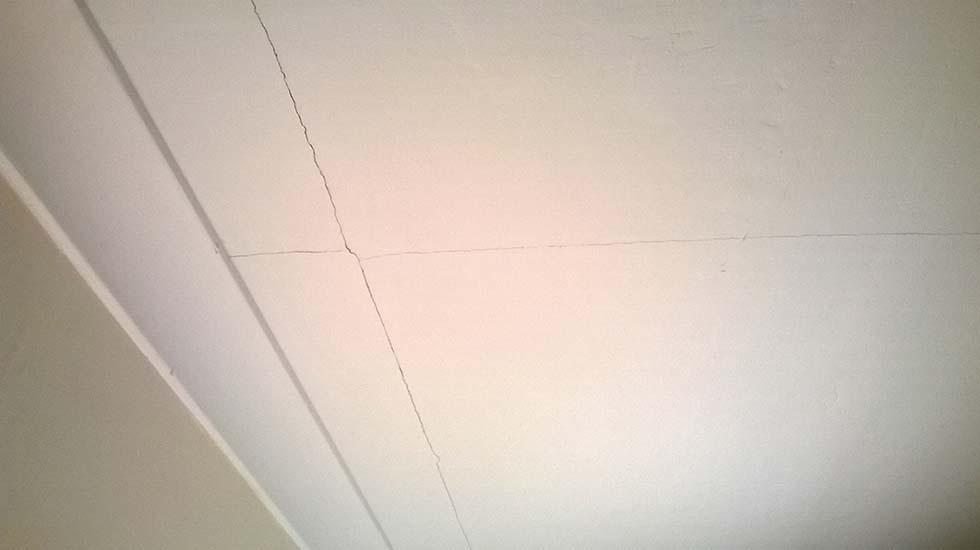 nine0005
nine0005
If the crack in the wall of the house expands or lengthens over time, then there is a risk of collapse of the wall or building, in which case it is necessary to call specialists in the construction industry. In an old house, a large crack may occur due to wear and tear - in this case, the house should be recognized as dilapidated or in emergency condition. In this case, the best option would be to demolish and build a new building.
If the reason for the appearance of cracks is in the unsatisfactory condition of the foundation, then the house will have to go through a number of serious and expensive measures. Depending on the violations found, the emergency wall can be dismantled in the house, brick, block rows are laid, blind areas are restored, etc.
What to do about cracks?
Shallow cracks can be repaired by plastering with mortar. When kneading, cement putty or PVA glue should be added to it. Before closing a crack, it is necessary to clean the place of its detection from destroyed fragments and dust, prime it, and apply a special reinforcing tape to the gap.
Cracks of medium size are repaired using a metal mesh. In this case, the destroyed wall covering must be removed, and the resulting solid base should be primed. Then holes should be drilled along the crack at a distance of 30 cm from each other for mounting dowels, insert them and fix the mesh with screws equipped with wide washers. If necessary, you can apply several strips of mesh with an overlap of at least 10 cm. The plaster mortar must be applied to the wall through the mesh. After that, the surface should be slightly leveled, wait for it to dry completely and apply the final layer of plaster. nine0005
Small cracks in the walls can be repaired with mounting foam. After the foam has dried, the excess must be cut off with a knife, and then cover the problem area with any suitable finishing material: plaster, paint, etc.
Cracks with a significant opening can be removed using an anchor (channel). First, the plaster is knocked down to the length of the metal plate, if this parameter is 1 meter, then the area is cleaned 50 cm on each side of the gap. The depth of the strobe should correspond to the thickness of the metal. nine0005
The depth of the strobe should correspond to the thickness of the metal. nine0005
Depending on the thickness of the wall, the material from which it is made, as well as its condition, fastening is carried out using dowels, anchor bolts or long bolts with a nut. The crack itself and the strobes must be cleaned and filled with mounting foam. Then you need to insert an anchor into the recess and fix it in 3 places, stepping back a little from the beginning and end of the gap, and in the middle. Then you need to apply reinforcing material and plaster the crack.
See also:
- What to do if you are late with the autumn planting of flowers? →
- How do I remove mirror film residue from glass? →
- ... Which film to choose for a greenhouse? →
repair
Next article
You may also be interested in
- In what rooms in the country should waterproofing be done? nine0037
- Is it possible to grow Exhibition onions with a seedless method?
- How to get rid of cracked heels? nine0037
- .
